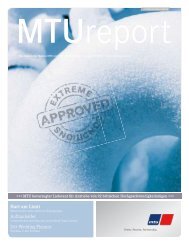Create successful ePaper yourself
Turn your PDF publications into a flip-book with our unique Google optimized e-Paper software.
95 years ago: Karl Maybach tests the first modern aircraft engine<br />
In 1917 Karl Maybach set up a test rig at 1,800 meters above<br />
sea level to show that his aircraft engine produced more<br />
power at altitude than its competitors.<br />
Learning to fly<br />
Testing engines to their limits under extreme conditions<br />
before they are sent out to the clients is by no means a new<br />
idea at <strong>MTU</strong>. Ninety-five years ago, Karl Maybach – one of the<br />
founders of Luftfahrzeug-Motorenbau GmbH from which the<br />
present-day <strong>MTU</strong> is descended – tested an aircraft engine at<br />
1,800 meters above sea level on a specially constructed rig.<br />
It was an occasion that signaled the birth of the first modern<br />
aircraft engine.<br />
The First World War was raging at the time and Maybach wanted<br />
to show he could supply engines for airplanes as well as airships.<br />
The challenge that had to be overcome is that at high altitudes<br />
the air density is lower, so the engine cannot produce as much<br />
power. Maybach’s solution was to compensate for the power loss<br />
by increasing the cylinder capacity and the compression. So the<br />
engine only developed its maximum output of 184kW (250hp) at<br />
an altitude of 1,800 meters. At ground level, it was throttled back.<br />
To convince the authorities that this engine really was superior<br />
to the competition, Maybach had a special test rig set up on the<br />
Wendelstein, a mountain in Bavaria. And he was proved right. The<br />
tests were a success and Maybach was soon able to try out his<br />
Mb-IVa engine in an airplane. In a test flight, a reconnaissance<br />
plane with the Maybach engine was able to climb to an altitude of<br />
5,000 meters in only 24½ minutes. Using a rival power unit that<br />
was equally powerful on the ground, the aircraft took 42 minutes<br />
to reach the same height. And the Mb-IVa engine had other<br />
advantages too. The oil was air-cooled by means of air scoops<br />
on the crankcase. Plus, it boasted twin fire-safe butterfly-valve<br />
carburetors and altitude-dependent control of the air/fuel mixture<br />
combined with simultaneous ignition timing adjustment – all of which<br />
made sure that fuel economy was efficient. The Mb IVa went into<br />
series production from 1917 and was used in Rumpler and Heinkel<br />
biplanes, among others.<br />
After the end of World War I, the Treaty of Versailles banned German<br />
companies from making aircraft equipment of any kind – which, of<br />
course, included Maybach aircraft engines. The Allies destroyed all<br />
of the plant and equipment for making them. From that point on, the<br />
company started producing high-speed diesel engines.<br />
Words: Lucie Maluck; Pictures: Tognum Group Archive<br />
To find out more, contact: Dr. Heike Weishaupt<br />
heike.weishaupt@tognum.com, Tel. +49 7541 90-3225<br />
50 I <strong>MTU</strong> Report 03/12


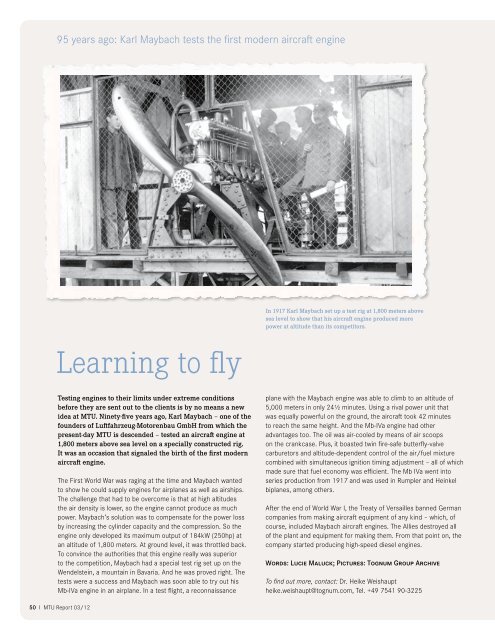



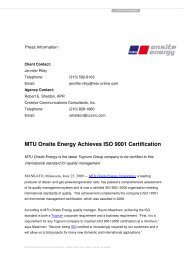

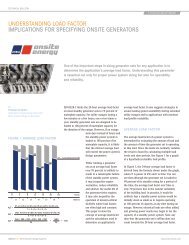


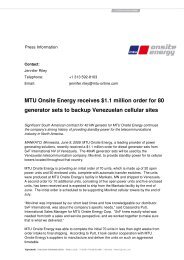

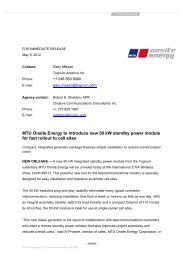

![Full power range of diesel generator sets [PDF] - MTU Onsite Energy](https://img.yumpu.com/28297693/1/190x253/full-power-range-of-diesel-generator-sets-pdf-mtu-onsite-energy.jpg?quality=85)
